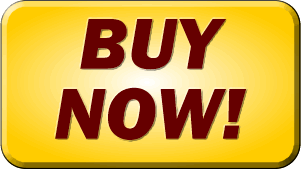Killer Sales Pages and How to Maximize Your Earning Potential There

Interested in learning how to create, market and sell information products, like e-books, e-courses, coaching workshops, instructional videos? Before you jump in, read this crash course in sales page 101. Below, some must-know tricks to ensure sure no one leaves that gorgeous sales page of yours without clicking Buy Now or at the very least, giving up their contact info!
Must-Have Sales Page Criteria: Convert More, Earn More
Keyword-stock your page title, H1 and H2 headlines.
Be sure to use keyword terms that people will be searching for. To find out what types of phrases people might use to hunt online for what you've got, do a Google search for the Google Keyword tool. Select a phrase that's somewhere between specific and broad.
Too specific, and no one will find you. Too broad, and you're competing with the rest of the world and will never be found. So strike that happy medium, and then include that exact phrase right in your H1 and H2 headlines, as well as your page title.
Jack up your headlines.
For each headline you write, combine clever wordplay with keyword practicality. You don't need to be the next Hemingway, just think of something catchy for the lead-in and then follow with a "tell it like it is" explanation.
Example: "One to Grow On! A 4-week Organic Gardening E-Course".
Most important details go above the scroll.
Be mindful of the size of your logo and headline, repeated words and ideas, too much white space, and all the things that take up valuable real estate up top which could be spent making key points about your terrific information creation!
You might even tell people, in the copy, that they should scroll down for more info. (Hey, seems obvious to us, but some folks need all the help they can get when it comes to the "innerwebs"!)
Minimum 3 mentions of the product name.
This is both for search engines and also to help cement the information into your reader's heads. Consider the person who may be reading along with what you have to say, but then becomes distracted by a ringing telephone, a live conversation, or even a computer crash.
You want this person to be able to recall your product so that he or she can easily look you up again later and maybe even make a purchase.
Order benefits and features from most to least important.
These days, people don't want to have to rifle through endless words to get the jist of what's being said. So state what you're offering from the get-go and then list your supporting points from most to least important.
Know the difference between benefits and features.
A "benefit" is something intangible, like "peace of mind" or "increased confidence." A feature is physical – all those "what you gets" that you might toss in as an extra bonus, such as "free gardening blog when you sign up" or "free spiral bound notebook." Group together product benefits into one section of text, and group together product features in another.
Be strategically bold.
Bold makes your buzz words pop. This works in your favor for both search engines and human readers. Bold your headlines (most of the H1, H2, H3 etc. web heading treatments will bold automatically when selected).
Bold any emphasized words and select keywords. Also bold the "lead in" text for every bulleted product point (i.e. the features and benefits).
Use whitespace to give the eyes a break.
There's nothing worse than a sales pitch that's all jumbled together into one clump of text. If you've created something like this, fix it immediately, or you can almost guarantee that no one will stop to read what you've written so carefully.
Create a sense of value.
Value is communicated through the use of tricks like bundle pricing and comparison shopping. If you're offering an email course, for example, you might want to include some (aforementioned) extras.
Things like "free access to our online discussion group when you sign up!" "A free copy of my book". Actually type out the price point or dollar value next to each item, then point out how much they've saved when it's all bundled together as part of the offer.
Convey urgency.
As the reader moves toward the bottom of the page, they will either be growing more excited and eager to purchase, or they will be losing interest. For those who fit the latter, you've got to drum up some urgency before they click that little X in the right-hand corner.
Give them a time-sensitive offer to respond to, such as "Order before Sept 15 to take advantage of this offer!"
(Also, act on what you say. If the price will increase by $50 next month, then update your page and your PayPal buttons to reflect that. Otherwise, no one will believe you the next time you make this sort of claim.)
Include eye-catching graphics.
Bright, clear images make a positive impression about your info product and help to burn the details into the reader's mind. If you've got a great logo, share that throughout.
Add relevent graphics at various points down the page. Include those little helpers like arrows and fancy bullets to create a professional look and feel. And don't just type out the price – create a graphic button that people can click to order.
Think about what live sales promotions look like. How do those graphics "pop" off the page to make the sale?
